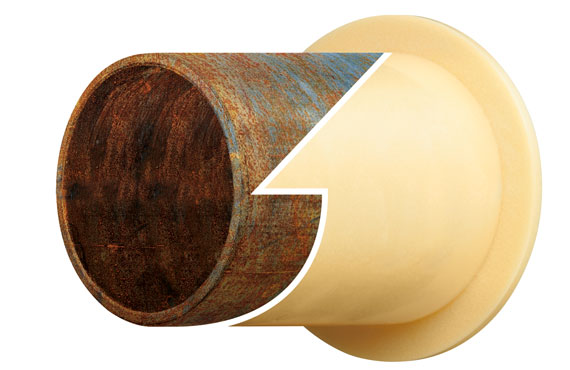Welcome to Sino Bearings web
24x7 HOTLINE:+86-28-81454188

 TECHNOLOGY
TECHNOLOGY Quite often, I hear from purchasing agents that the bearings they are going to use within their machine or system need to be as cheap as possible. Cost-savings are a real concern for many companies, and it’s easy to think that reducing the price on a small, or seemingly insignificant, part should be obvious and easy enough. However, the problem with this idea is that the bearing is actually extremely significant—it can make or break (literally) a machine. Looking at the bigger picture allows us to realize that any cost reductions should be measured by considering the overall costs within the entire system.
Quite often, I hear from purchasing agents that the bearings they are going to use within their machine or system need to be as cheap as possible. Cost-savings are a real concern for many companies, and it’s easy to think that reducing the price on a small, or seemingly insignificant, part should be obvious and easy enough. However, the problem with this idea is that the bearing is actually extremely significant—it can make or break (literally) a machine. Looking at the bigger picture allows us to realize that any cost reductions should be measured by considering the overall costs within the entire system.
I once had a customer whose machine used a custom-designed competitor part. They were interested in switching out their bearings for iglide® highly-engineered plastic bearings and were adamant that the cost of our iglide®J material had to be the same or less. After numerous discussions and meetings where they revealed how much it was actually costing them to use this competitor plastic bearing, we were astonished by what we heard—the part being discussed was located in an extremely complicated area to get to and had to be “re-greased” every 24 hours. This obviously meant long downtimes, labor expenses, and material costs. After demonstrating the benefits of upgrading their bearing material to a truly engineered material, paying more for a self-lubricating and maintenance-free solution saved them over $40,000 per year—I like to call these additional costs the “hidden costs”. It’s easy to only focus on what you pay for individual parts when trying to reduce costs, but it’s not as easy to see the real hidden costs and their impact.
More often than you realize, those who are designing or purchasing bearings neglect to consider the following:
Cost of maintaining the parts, including labor and materials costs. Cost of warranty claims caused by improper maintenance. Cost of having to buy polished and/or hardened shafts, which are often required for other bearing materials.Next, we’ll look a little deeper into each of these costs.
Cost of maintaining the parts, including labor & material costsMany bearing materials on the market require maintenance, such as re-lubricating the bearings. Once again, these are those “hidden costs” we were referring to earlier since they usually do not affect the manufacturer of the product, but rather, the end user. Additionally, machine downtime that is caused by re-lubrication can quickly add up, along with the time that someone spends on that maintenance and the costs of the lubrication itself. See how deep the impact of this goes?
For the manufacturer, these costs can start to add up as well due to any grease fittings and machining of additional lubrication channels that might be necessary for allowing proper maintenance or lubrication.

In a previous blog post, we explored how to prevent avoidable warranty claims. As a manufacturer, the costs of these claims can really add up, especially due to the time involved investigating and then deciding whether they are valid or not. Additionally, there could be a number of claims that immediately get paid out simply because it’s the easiest course of action, which of course would lead to a large spike in additional costs.
Every year, excessive friction and wear caused by improper lubrication adds up to over $700 million USD for companies, which could easily be avoided by eliminating the need for external lubrication all together.
Cost of shafts that are often required for other bearing materialsTypically, metallic bearing manufacturers require the use of extremely smooth and/or hardened shafts, which can cost a significant amount of money. Oftentimes, there are opportunities to save costs here by using engineered plastics that can be used on a variety of different shafts. For example, iglide® bearings prefer to run on a shaft that has some roughness to it. This allows the solid lubricants to embed themselves in the valleys of the shaft to create an optimized gliding surface. So many customers are looking to reduce weight in their applications for both cost and performance reasons. Choosing a bearing that can operate on a variety of shafts is a great way to make that happen.
Here are just a few of the ways you can save on the overall costs of your bearing application while avoiding the urge to replace your bearings with cheaper bearings. Opting for bearings that are self-lubricating and maintenance-free can save not only time, but also money. At igus®, our goal is to help you improve your machine while saving as much cost as possible.
If you are interested in speaking with an expert about the ideal bearing’s for your system, please do not hesitate to contact Nicole Lang, iglide® Product Manager.